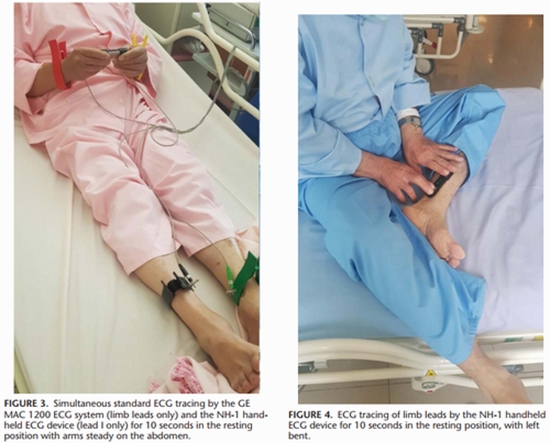Clinical Validation of a Smartphone-based Handheld ECG Device: A Validation Study

Background
Remote cardiac monitoring and screening have already become an integral telemedicine component. The wide usage of several different wireless electrocardiography (ECG) devices warrants a validation study on their accuracy and reliability.
Methods
Totally, 300 inpatients with the Nabz Hooshmand-1 handheld ECG device and the GE MAC 1200 ECG system (as the reference) were studied to check the accuracy of the devices in 1 and 6-limb lead performance. Simultaneous 10-second resting ECGs were assessed for the most common ECG parameters in lead I. Afterward, 6-lead ECGs (limb leads), were performed immediately and studied for their morphologies.
Conclusions
The diagnosis of critical pathological rhythms, including atrial fibrillation and high-grade atrioventricular node block, was not missed by the Nabz Hooshmand-1 and GE MAC 1200 ECG devices. Accordingly, rhythm detection as the primary purpose of handheld ECG devices was highly accurate. Both devices had acceptable sensitivity to diagnose long P-R and long and short QT intervals. Although the modern technology of smartphones and the physical inability for the 6-limb mode might cause old patients’ difficulty in utilizing such devices, their use for screening and follow-up is safe.

.png)
.png)
ارسال نظر